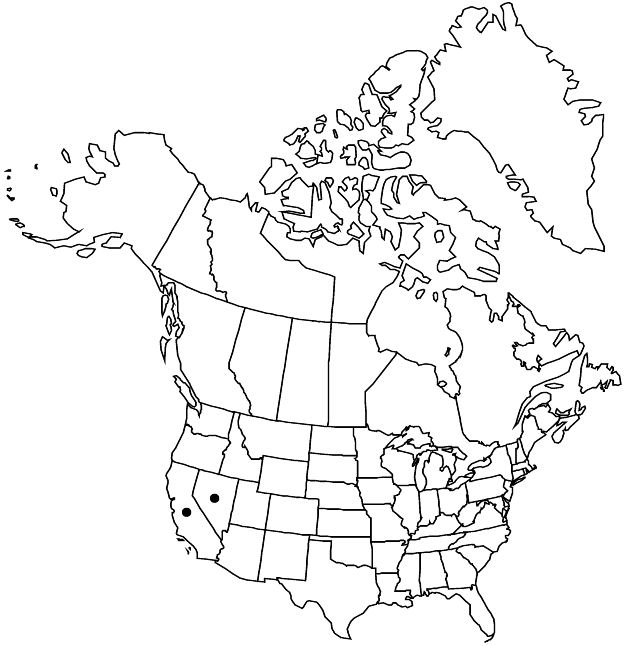Mentzelia polita
Bot. Gaz. 47: 427. 1909.
Plants perennial, bushlike, with subterranean caudices. Stems multiple, erect, zigzag or straight; branches along entire stem, distal longest, antrorse, straight to upcurved; glabrescent, smooth to touch. Leaves: blade 16–84 × 2.2–10.6 mm, widest intersinus distance 2.2–7 mm; proximal oblanceolate, margins usually entire, occasionally dentate, teeth 0–6 (–14), perpendicular to leaf axis, 1–2 mm; distal elliptic, lanceolate, or linear, base not clasping, margins usually entire, rarely dentate, teeth 0 (–6), perpendicular to leaf axis, 0.6–2 mm; abaxial surface with complex grappling-hook and infrequently needlelike trichomes, adaxial surface with needlelike trichomes. Bracts: margins entire. Flowers: petals light to golden yellow, 7.8–11 (–14.2) × 1.9–2.8 (–4.2) mm, apex rounded, glabrous abaxially; stamens white to light yellow, 5 outermost petaloid, filaments narrowly spatulate, slightly clawed, 5.9–9.2 (–10.1) × 1.2–2.7 mm, with anthers, second whorl with anthers; anthers twisted after dehiscence, epidermis smooth; styles 5.2–7.6 mm. Capsules cupshaped, 4.5–8.8 × 5.8–8.8 mm, base rounded, not longitudinally ridged. Seeds: coat anticlinal cell-walls straight, papillae 15–24 per cell. 2n = 22.
Phenology: Flowering Apr–Aug.
Habitat: Dry washes, arroyos, steep slopes.
Elevation: 500–1500 m.
Discussion
Mentzelia polita is known only from the Clark Mountains of San Bernardino County, California, and the Spring Mountains of Clark County, Nevada.
Selected References
None.
Lower Taxa
No values specified."longest" is not a number."not elongating" is not a number.
